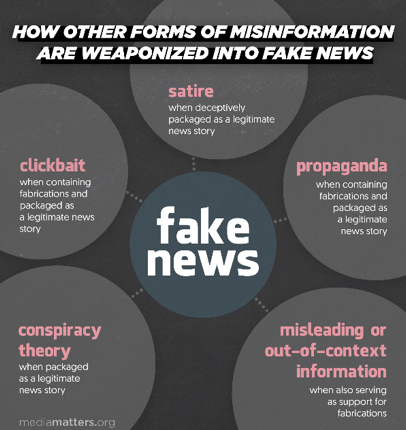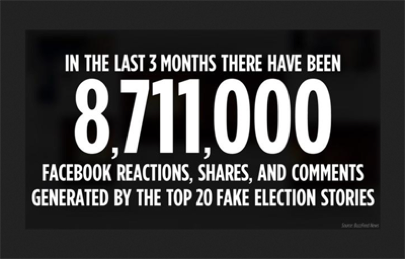Fake News
Fake news has been the topic of discussion over the course of 2016-2017. Fake news is the spread of misinformation, often through social media platforms to drive users to a certain website and increase traffic. Fake news can be delivered through individual accounts whose post gets traction and then shared or retweeted 1000’s of times; or by companies looking to make a profit. A quote New York Times case study article on fake news explains the background of this new phenomenon well, “in an ever-connected world where speed often takes precedence over truth, an observation by a private citizen can quickly become a talking point, even as it is being proved false.

With multiple social media platforms and the constant streaming of information it is hard to determine what is true and what is false. As algorithms continue to advance and share information, it determines what the user wants to see, is interested in, or promotes posts from a certain group of followers. The top of your newsfeeds may not be promoting the correct information or information in real time.

Corporations are putting money towards the fight to strengthen journalism and are working together to combat the technology behind fake news. As of April 5, 2017, Ebay’s founder, Pierre Omidyar, commits $100 million to “address some of the causes of what the firm describes as the ‘global trust deficit’. Other companies, such as Google and Facebook, have partnered together to help stop fake news stories from spreading. CEO of Facebook, Mark Zuckerberg, came under fire after the 2016 election, when Facebook was accused of illegally aiding the 2016 Presidential election. He stated that less than 1% of Facebook’s news is fake or posted for a profit and political ties, but he feels strongly that Facebook gave a voice to many throughout the 2016 Presidential Election and played a role in shaping those voices.
Apple’s CEO, Tim Cook, has been vocal about his thoughts on fake news as it is “killing people’s minds and a big problem in a lot of the world.” Worldwide, countries like Germany, are putting pressure on social media platforms to regulate and control the spread of fake and hatred news or propaganda, “Germany pushed ahead with legislation that threatens social networks such asFacebook Inc.with fines of as much as 50 million euros ($53 million) if they fail to give users the option to complain about hate speech and fake news or refuse to remove illegal content.”
Comical errors of fake news can take place too. A recent fake news error actually happened off of social media and was printed in an early edition newspaper from The Boston Globe. The morning after the Super Bowl, a Florida resident work up to see this on the front page of their paper. This example of “fake news” was due to print and early editions of the paper, and The Boston Globe quickly printed a corrected version with the Patriots winning announcement.

So, what is the solution? I think individuals need to personally question anything they read online, hear from a news source, and even word-of-mouth speech. People need to be able to distinguish between news sources which are trusted and fact checked versus which ones are looking for click bait and viewership. As more networks rush to be the first to report on topics and breaking news, and more individuals are live streaming breaking news, the topic of fake news, propaganda sharing, and hoaxes is not soon going away.
Jackie Bowes, Graduate Student
Master of Arts in Emerging Media
Loyola University Maryland